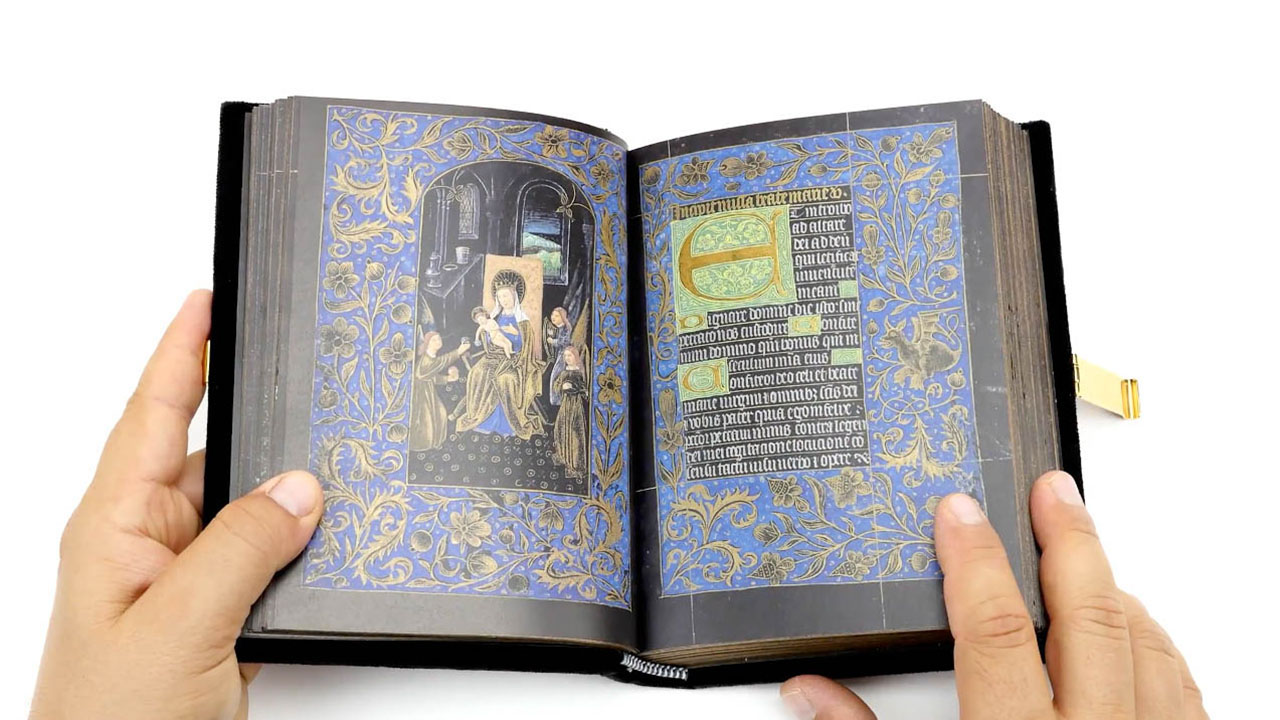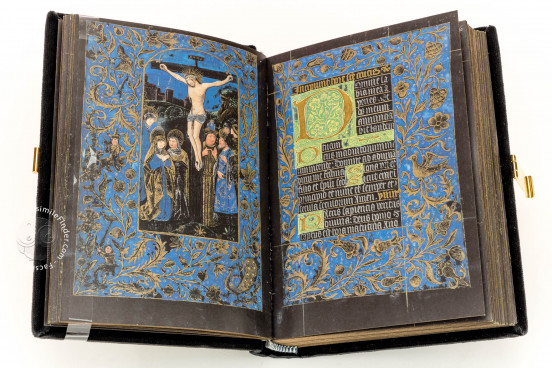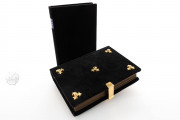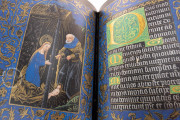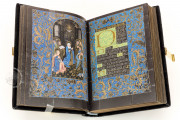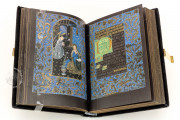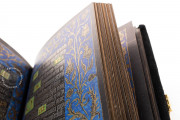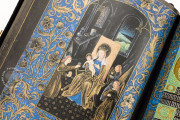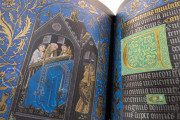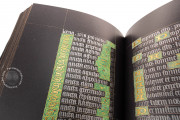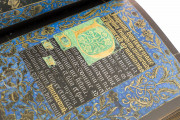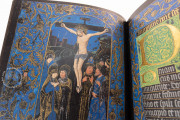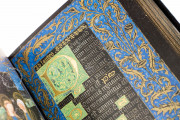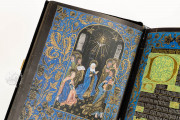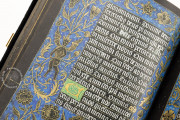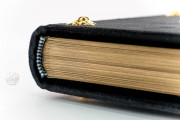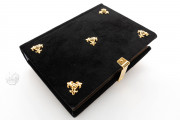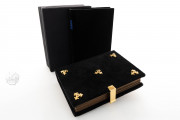Only a limited number of works on dyed, stained, or painted parchment or paper survive to us from the Middle Ages. Of those, the Black Hours is a visually stunning late fifteenth-century deluxe codex made in Bruges. It was written and illuminated on parchment dyed black. Fourteen full-page miniatures signal the various textual divisions of the book and exploit the sophisticated color scheme of the dyed parchment.
As a typical book of Christian private devotion, the Black Hours contains the requisite texts of a book of hours, prayers to be said in the private Christian devotions of the laity, in Latin. Many of its pages feature painted borders of gilt acanthus leaves and drolleries on a ground of deep blue taking full advantage of the reserve black parchment.
Miniatures of Elite Flemish Artists
The luxuriously subtle palette of the miniatures features the black of the dyed leaves, with generous use of gold, and focuses on rich blues with sparing use of other colors. The Flemish artistic context of these miniatures is clear, and scholars have linked the images to a variety of workshops. The artists at work here appear to be followers of Willem Vrelant making visual references to renowned miniatures by Philippe de Mazerolles and Lieven van Lathem.
Glittering Silver and Gold on Black
Unimpeded by the difficulty of ensuring legibility on the black leaves, the shimmering script heightens the extravagance of the codex. The gold-leaf initial letters of each prayer are on green grounds and feature elaborate filigree decoration in yellow. Smaller single-line Lombard initials on green grounds mark lesser textual divisions. The rubrics are written in gold, while most of the text is written in silver, all in the Gothic Textualis script preferred for liturgical and devotional books of the period.
The New Black of the Burgundian Court
Although great expense clearly went into the production of this book, no records survive that indicate its original patron. The attraction to luxurious, velvety black is closely associated with the Burgundian court, from which a total of seven black-dyed books made in the late fifteenth century survive, the most famous of which is the Black Prayer Book of Galeazzo Maria Sforza. Following a trend promoted by Philip the Good (1396-1467), Duke of Burgundy, black became the ultimate power color of status and dominated fashion in early modern Europe. The captivation with the color is evident in the portraiture of black-clad wealthy nobles through the end of the sixteenth century.
Rebound by Georges Trautz
The nineteenth-century binding is the clearest testimony to the provenance of the Black Hours. The French bibliophile and silk manufacturer Nicolas Yemeniz (d. 1871), who owned the book by 1867, had it rebound by the renowned bookbinder Georges Trautz (1808-1879) in tan pigskin with silver clasps stamped with Yemeniz's monogram of interlocking Y's.
A Treasure of Morgan's Collection
Before entering the collection of J. Pierpont Morgan (1837-1913) in 1912, the Black Hours also sojourned in the collections of Ambroise Firmin-Didot (1790-1876) and Robert Hoe (1839-1909). J. P. Morgan, Jr. (1867-1943) transformed his father's library into a public collection, known as the Pierport Morgan Library, in 1925. The institution became the Morgan Library & Museum in 2006.
We have 1 facsimile edition of the manuscript "Black Hours": Das Schwarze Stundenbuch facsimile edition, published by Faksimile Verlag, 2001
Request Info / Price
